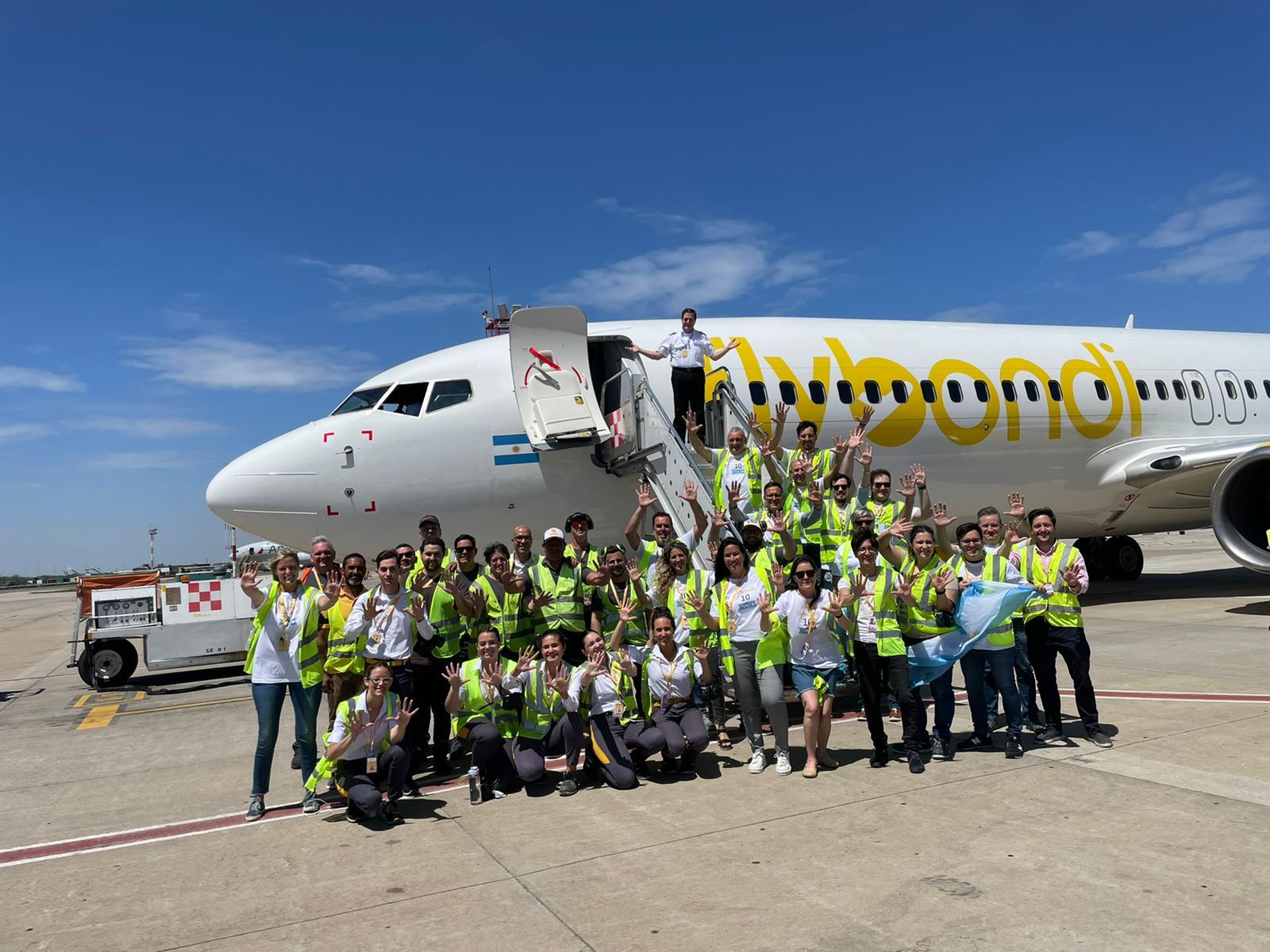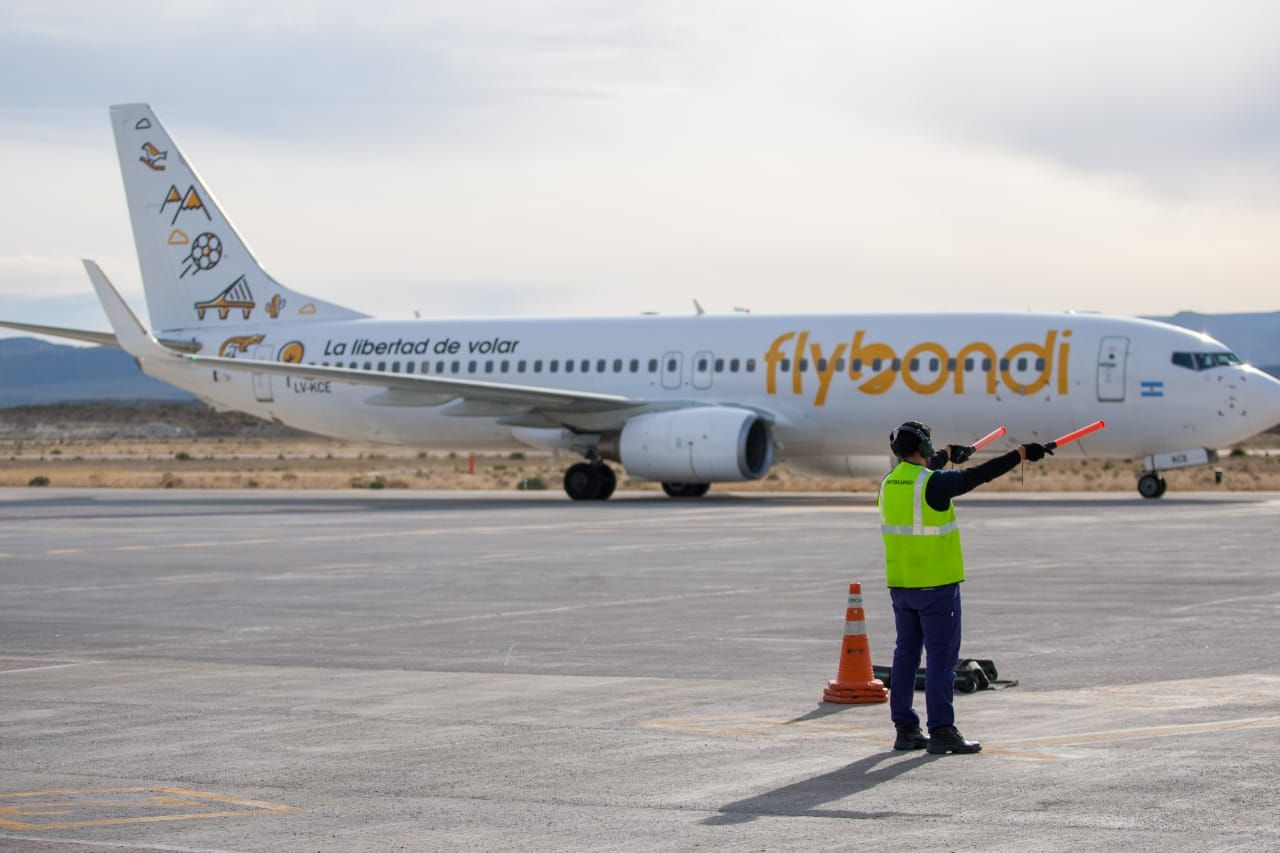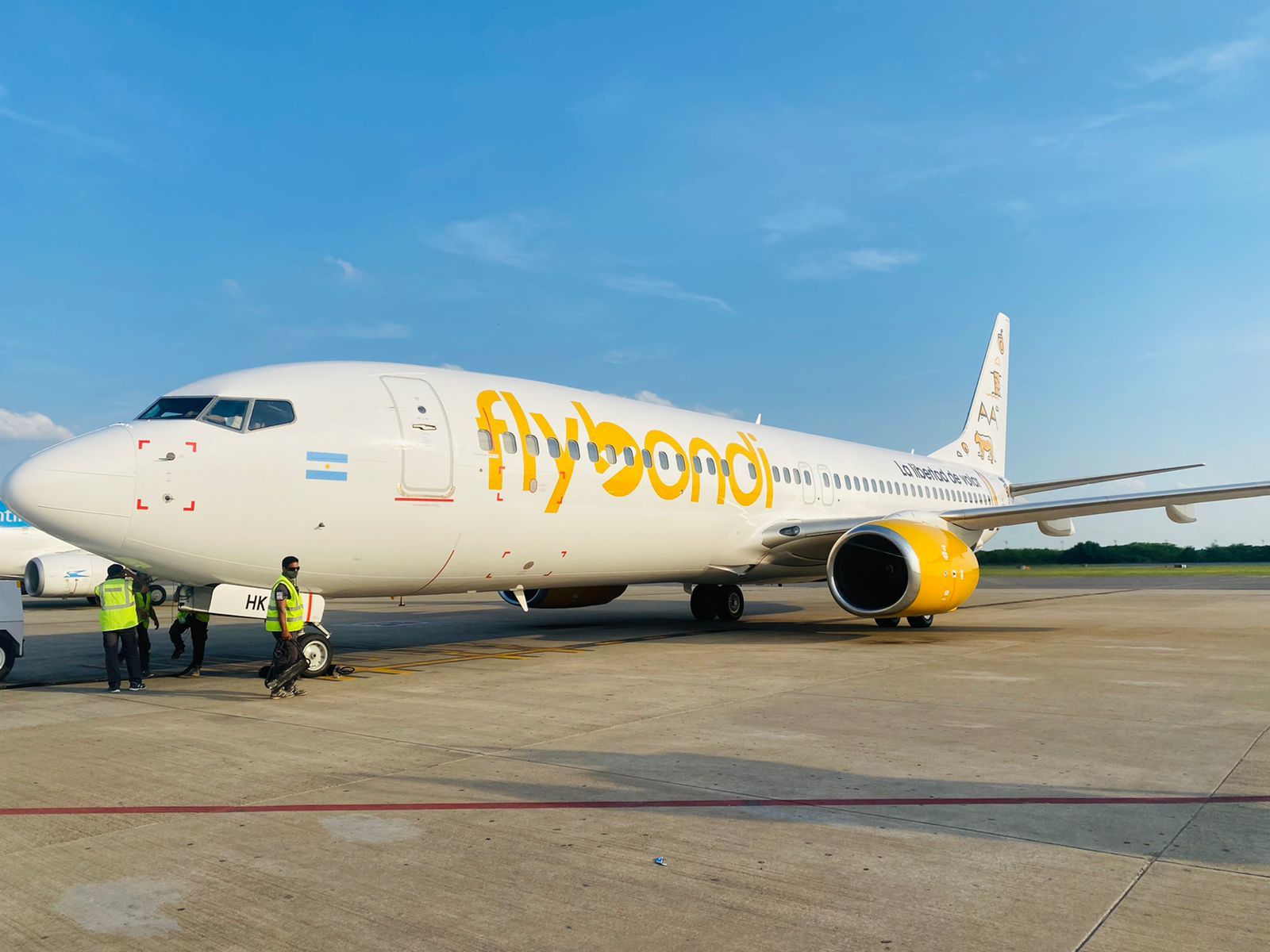This week, the Argentinian ultra-low-cost carrier Flybondi received its tenth aircraft, a Boeing 737-800NG registration LV-KGN with a capacity to carry 180 passengers in a single cabin environment. This aircraft had a long way home to Ezeiza International Airport (EZE) in Buenos Aires, going through five different cities before being delivered to Flybondi.
The road of the tenth aircraft
On November 23, at around 14:01 (UTC), Flybondi’s tenth aircraft, a Boeing 737-800NG, landed in Buenos Aires. For the Argentinian ultra-low-cost carrier, the delivery of this plane was a milestone, allowing the company to successfully end its initial growth plan in which it set the goal to double its fleet, capacity and carried passengers in one year.
Flybondi sent a team of seven pilots and two mechanics to take delivery of this aircraft. They had to go all the way to South Korea to retrieve the aircraft, where it was stored. The crew took delivery of the aircraft at Sacheon Airport (HIN), which serves the cities of Sacheon and Jinju. From that Korean hub, a 30-hour journey began. The distance between Sacheon and Ezeiza is 19,422 kilometers (10,487 nautical miles).
Find the latest South American aviation news here.
First, the crew flew between Jinju and Sapporo International Airport (CTS) in Japan. After a short stop at the Japanese airport, Flybondi’s aircraft departed for Anchorage International Airport (ANC) in Alaska, United States. This was the first stop in the US for Flybondi’s newest plane.
Following the Anchorage stopover, the crew continued to San Antonio International Airport (SAT) in Texas. After that, Flybondi’s 737-800 flew from San Antonio to Guayaquil, Ecuador. These four flights and layovers in five different cities were done on November 22 (taking advantage of the time zones). On Wednesday, the crew operated the last delivery segment, flying from Guayaquil to Buenos Aires.
The history of this aircraft
Flybondi’s tenth 737-800 is a 12-year-old plane first ordered by Aviation Capital Group in 2006, a leasing company that still owns the narrowbody. Aviation Group received it in August 2010. Prior to operating with Flybondi, the jetliner had two other owners. These were Skymark Airlines, a Japanese carrier based at Tokyo Haneda International Airport (HND). Skymark Airlines employed this plane between 2010 and 2014, and after that, it went to T’way Air, an airline based at Daegu International Airport (TAE), South Korea.
What’s next for Flybondi?
The Argentinian ultra-low-cost carrier has established new goals after receiving its tenth aircraft. Flybondi would like to close the year with a fleet of 12 aircraft; therefore, we can expect a couple of additional deliveries between November and December.
Moreover, Flybondi expects to add five additional Boeing 737-800s next year, increasing its fleet to 17 aircraft. In the last year, Flybondi has hired more than 500 additional employees; the carrier has also added domestic and international routes, launching services to four new destinations in Argentina; Ushuaia, Puerto Madryn, El Calafate, and Comodoro Rivadavia. It currently flies to 17 domestic destinations and two international. Mauricio Sana, Flybondi’s CEO, said,
This year's growth is the result of the commitment we make to our customers. These were months of hard work, where we faced a complex scenario in the execution of an investment plan of this magnitude. We started 2022 with four aircraft, and today, our fleet has 10, with a contribution of more than 200 million dollars in the Argentine industry and a long-term and sustainable bet on the future. We aim to continue consolidating our position as the fastest growing airline in Argentina and the region in recent years.”
Would you like to travel with Flybondi? Let us know in the comments below.



